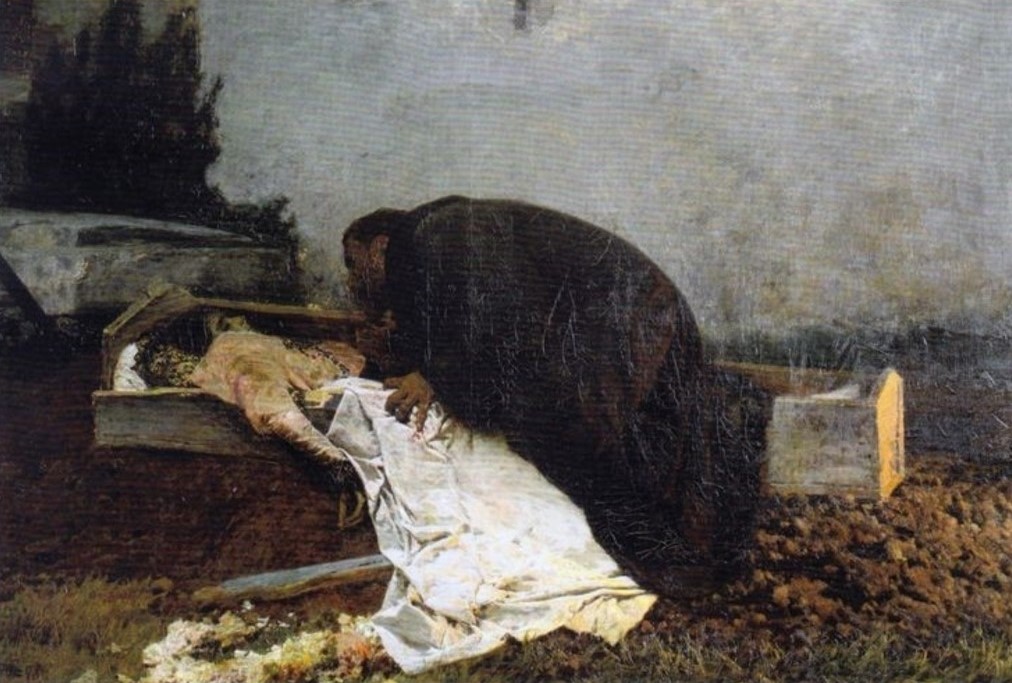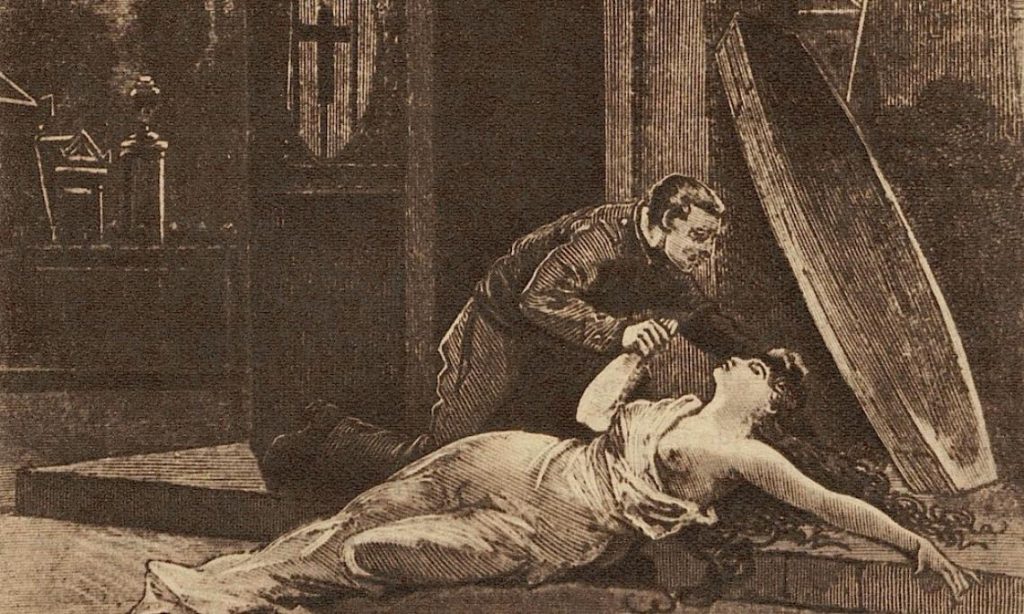
As civilization has progressed, humans have become self-aware. Societies or Modern Societies have now evolved and have changed the way an individual thinks. In the present day and age, we are learning to be more gender-inclusive and aware of the sexual orientation of our peers. But with the growth of a more liberal society, we are learning about deviation from what we used to think was our biological calling. This deviation can be bad and good. The popular deviation is the existence of multiple genders and people of sexual orientation. But our society has also evolved in a way that we are yet to comprehend. Paraphilia, more commonly known as sexual perversion or deviation, provides insights into these lustful ways of human psychology. Necrophilia is one such under-studied paraphilia.
Necrophilia for those unaware is a form of sexual deviation wherein a human develops a sexual attraction for corpses. Such deviation is classified as a disease under the term paraphilia by the World Health Organization in the International Classification of Disease Manual. It is due to circumstances one of the rarest forms of necrophilia to identify.
History of Necrophilia
Necrophilia has been around for centuries, there are multiple recollections in literature and all sorts of media of it being associated with an unspoken evil. An act of evil that no human could or should be engaging with.
The earliest mention of the practice can be traced to ancient Egypt. It is believed that corpses of famous men or women who were perceived as attractive were not embalmed right after their death. The corpse was preserved for 3-4 days after their passing to prevent embalmers from mutilating or violating such corpses. However, male corpses were subject to a different treatment. A ritual involving pseudocopulation was performed to ensure that the dead men keep their virility.
The practice of Necrophilia was nonetheless present throughout the world for ages. However, the term was used first in 1850 when Belgian Physician Joseph Guislain delivered a lecture about a contemporary necrophiliac Francois Bertrand. The term can be literally interpreted to mean fondness of dead/corpses.
Presence in Societies
The act is thus prominent throughout history but not often discussed. The primary reason for this can be attributed to the fact that Sex was a taboo or sin in ancient times. Perceived as an act of evil, sex was an act committed by sinning. Even as the society outgrew its old thinking, the Ick factor made it an uncomfortable or unpleasing topic of discussion. Under such circumstances when a dead body is involved, society in general while addressing the issues steered clear of it.
Perpetrators
One of the most persistent problems throughout the history of necrophilia has been the fact that it is one of the most least observed and studied forms of sexual deviation. Perpetrators are not easily caught and most necrophiliacs never even engage in any such acts. Throughout history, embalmers, morticians, murderers, and soldiers have been convicted or known to have committed or engaged in the act. The requirements for such an activity are bizarre nonetheless. Places with good access to dead bodies are no doubt a hotspot for necrophiliacs. Grave–robbing is another activity that can potentially be a result of necrophilia. Most perpetrators are either in a position to commit the act, get away with it, or never engage in such acts. This is better explained through the classification that is given to persons affected by necrophilia. In a published report about the same, necrophilia can be given a ten-tier classification.
| Title | Identification |
| Genuine Necrophiliacs | Persistent sexual attraction for a corpse over 6 months |
| Role-playing Necrophiliacs | Only interested when someone pretends to be dead and not actually dead |
| Romantic Necrophiliacs | Unable to bear the loss of their lover, such person refuses to let go of the dead body |
| Tactile Necrophiliacs | Engage in physically touching the corpse but not engaging in intercourse. |
| Opportunistic Necrophiliacs | Unless there is an opportunity to engage in necrophilia, these people do not engage in such activities actively. |
| Homicidal Necrophiliacs | Sadistic murderers engage in intercourse after killing someone. |
| Fetishist Necrophiliacs | People are interested in specific body part removal, not actual intercourse. |
| Exclusive necrophiliacs | People who cannot engage in intercourse with a living human being. |
| Necromutilomaniacs | People who mutilate a corpse and derive pleasure from it. |
| Fantasizing necrophiliac | People whose fantasy is necrophilia but never engage in intercourse or physically with a corpse. |
Impact on Society

Being is a crime whether expressly or impliedly provided by law in most countries. It is not a widespread crime and is still a matter of concern. Ancient Egypt provided us with insight into the rampant practice and the efforts to stop it. While the discreet and un-intuitive nature of the crime might be responsible for it, it could be widely underreported. As a matter of greater concern, the bizarre requirement of a dead person/corpse is only fulfilled by a few professions. Nonetheless, it is still possible while being in such professions to engage in necrophilia. While the act is considered as the degradation of a dead body, it has impacted society psychologically. It has been reported that police in the UK & US due to perceived stigmatization of the topic, charge the perpetrator with unrelated criminal charges.
Social Stigma
Necrophilia has affected our thinking in more ways than we can imagine. The primary reason is the association of the term with Sex. Due to the unpleasant thoughts for people not into necrophilia, it is considered inherently wrong. Most of the countries have had a law against it due to the stigma of sin attached to it. Is there a sociological impact of necrophilia? In some cases, it can be argued it is harmless. A few US states did not criminalize necrophilia for years due to the belief that no social harm can be done as a result of intercourse with a corpse. However, the courts representing the voice of the public mandated the creation of a law.
The right to preserve your loved one was recognized as a right and was thus protected. Most public policies and laws are framed on traditional values of what is right and wrong. Necrophilia globally has been wrong. Even though it is not reported or even studied that often, it is still a part of our history that we consider dark and threatening.
Criminal Liability
As a part of the bigger problem, necrophilia and associated acts could lead to potential sexual crimes and disturbance of law and order. While it is stated that the majority of necrophiliacs are genuinely interested in corpses, it is to be argued that those unwilling or unable to access dead bodies only fantasize about it. While it has been researched and stated that most necrophiliacs are prompted by the desire to have intercourse with no resistance and the idea of domination.
There is nothing that proves that necrophiliacs would not resort to killing living beings or even attempting to engage in non-consensual intercourse with living beings. Rape, sexual harassment, bestiality, all form an umbrella of sexual offenses that can either lead to necrophilia or necrophilia might lead to them. Homicidal Necrophiliacs are one such danger to society and its laws. The sheer deviation from living to the dead is unpredictable and is thus needlessly classified as a crime. Crimes that shake public morale and affect people’s daily lives should and do attract criminal liability.
Rehabilitation
Necrophilia committed by a human being would still mean that there is an involvement of a living human. This living human can very well be a normal person affected by their situation and circumstances. Rehabilitation and treatment are recommended for such conditions should one identify them. While the deviation is still to be cured, the acts and urges can be controlled to be less criminal in nature.
We should understand that being homosexual at one point attracted paraphilia treatments and was believed to be a mental state that could be altered. However, homosexuality was thus out of reach for such scientists who believed they could cure it. Similarly, necrophilia cannot be cured and only be reduced to help the patient deal with it better.
Legal Aspects of Necrophilia
Necrophilia can almost always be categorized as an act that is against nature. Often, it is associated with bestiality and other such acts and is thus legislated on by the state. It is an act that while maybe expressly banned, would be impliedly illegal.
The example for the above is India. The two major laws are under sections 297 and 377 of the Indian Penal Code. Section 297 punishes such persons who in-dignify human corpses, while 377 outright considers acts against natural order as punishable. These two pieces of law do not provide for necrophilia expressly but impliedly.
This is problematic as section 297 of IPC is a law that penalizes trespassing and then committing the act, professionals or people who encounter corpses legally and without trespassing would not attract the provision. As per the classification of necrophiliacs, committing sexual intercourse does not seem to be the only factor. Section 377 would thus fail as no sexual act is committed by dismembering a dead body, in fact, it is the pleasure of dismembering that is a necrophiliac.
While many states in the US declare it as a felony & misdemeanor, few states are yet to enact or have legislation outright prohibiting necrophilia. Massachusetts, North Carolina, Virginia, etc. do not have a law in respect of necrophilia.
The law in India and many countries is the most basic gate to stop necrophilia. There are loopholes in most laws that only imply illegality, while the express provisions do not exhibit the depth and detail that is needed from them. This is again partially due to the topic being uncomfortable to discuss and legislate on. While there are many where it is a socially unacceptable practice but is not illegal for example in the Philippines.
Conclusion
The notion of consent . . . the law’s line between intercourse and rape, is so passive that a dead [woman] could satisfy it.
Catharine A. Mackinnon, Reflections On Sex Equality Under Law, 100 Yale L.J. 1281, 1300 (1991) (Citing Andrea Dworkin, Intercourse 129 (1987); Susan Estrich, Real Rape: How The Legal System Victimizes Women Who Say No 29–41 (1987))
The quote is appropriate as while we deem it to be a nasty, evil, and unlawful practice, the law barely makes any effort to criminalize the act. There is hardly any effort made into distinguishing the act from the most basic act of intercourse to dismembering a corpse. The legal aspects of necrophilia are however under-developed due to our own fault. It is a topic of unpleasant taste and discussing it is not an easy task. While we can only hope that more studies are undertaken towards it, it is for the time being expected to remain in the dark shunned alleys of society and the grey areas of law.
Editor’s Note
The author of this article provides a socio-legal analysis of necrophilia. He further discusses the history, its presence and impact on society, and the social stigma attached to this topic. Then the author goes on to discuss the legal provisions provided against necrophilia and concludes that there have not been enough efforts to criminalize the act because the topic makes people uncomfortable. More studies need to be done to ensure it does not remain a grey area of law.
Originally published on July 20, 2021, 12:00 pm